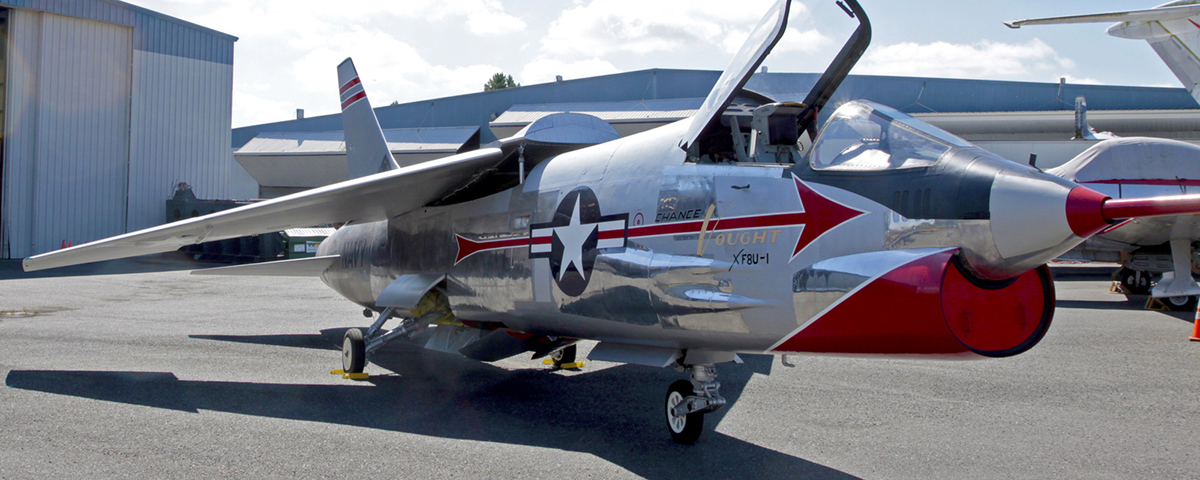The First Crusader
Few important aircraft prototypes make it to fully restored museum status. They often become test mules and are eventually junked, or they are fettled to become prototypes for further varieties of the basic airplane, losing their original identity in the process. Even though it spent five years as a Vought test aircraft, the very first Crusader XF8U-1 prototype survived well enough that a 20-year restoration process at the Museum of Flight, near Seattle, resulted in a historic static-display artifact.
The F-8 Crusader (F8U was superseded in 1962, when the DoD standardized military designations) was a noteworthy airplane, though often overshadowed by the McDonnell F-4 Phantom II. But the Museum of Flight’s Crusader, Bu.No. 138899, is especially significant, as it exceeded Mach 1 on its first flight, in March 1955—a feat never before achieved. In 1956 a Crusader set a speed record of 1,015 mph, becoming the first production airplane to better 1,000 mph in level flight. It could have accelerated more to break the British-held absolute world record of 1,132 mph, but the Navy chose not to provide that insight into the F-8’s capabilities. Eleven months later a Crusader flown by Marine Major John Glenn made the first transcontinental supersonic flight—Los Alamitos, Calif., to New York in three hours and 23 minutes.
The F-8 was big but light, single-engine but powerful, with a dragon’s-breath afterburner. So powerful, in fact, that a number of F-8s made successful takeoffs—and landings—with their wings still folded. It helped that the Crusader’s ailerons were inboard of the wing-fold point, so they continued to function as roll-control surfaces rather than as self-canceling vertical “rudders.” (One distracted pilot made a wings-up takeoff and managed to bank around and land, but remained so distracted that he forgot to extend the gear.)
The Crusader’s defining feature was its variable-incidence wing. For takeoff and landing, the wing was cranked upward 7 degrees at the leading edge. This allowed the fuselage to stay at a reasonable attitude on approach while the low-aspect-ratio, high-speed wing sat at the angle of attack necessary for arrival aboard a carrier deck.
Though the Crusader was designed to carry four 20mm cannons internally, its primary weapon was the AIM-9 Sidewinder missile. F-8s shot down 19 MiGs during the Vietnam War, yet only two were downed solely by cannon fire, two more by guns to finish off Sidewinder hits. But it could be argued that in this day of one-size-fits-all “fighters” equipped for stealth, attack, interception, close air support, STOVL, reconnaissance and pizza delivery, the Vought Crusader remains the last true air-superiority fighter.





